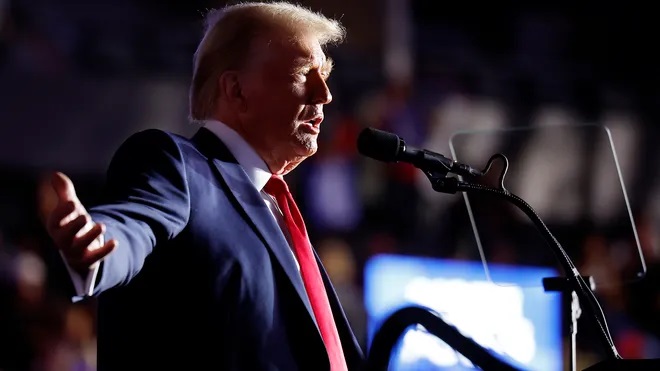First published in Eurasia Review, 7 November 2024
The re-election of Donald Trump in 2024 has set the stage for a significant shift in both American domestic and international policy. Returning to the White House in January 2025, Trump’s second term is expected to renew his ‘America First’ ethos—a promise to prioritize American interests over traditional alliances and multilateral frameworks. Trump’s appeal, reinforced by a steady erosion of public trust in the Biden-Harris administration, reflects the public’s desire for a return to perceived American strength. Yet as he steps back into global leadership, Trump encounters a more fractured and volatile world order than the one he left in 2021. Global conflicts, economic disruptions, and shifting alliances create an unpredictable landscape that could amplify the effects of his policies in unprecedented ways. His promises of a “Golden Age for America” face immediate challenges, demanding more than slogans if they are to reshape the global economy.
America-First Redux: Reclaiming Economic Sovereignty at All Costs
Central to Trump’s renewed agenda is his commitment to an ‘America First’ doctrine, which prioritizes national economic sovereignty over globalization and multilateral cooperation. Trump’s economic stance reflects a protectionist ideology that, while popular among his domestic base, carries profound implications for the global economy. His promise to increase tariffs on imports—from an additional 10-20% on most goods to as much as 100% on certain Chinese products— indicates a return to trade policies that prioritize immediate U.S. benefits, often at the expense of international economic stability.
This approach mirrors the Monroe Doctrine in its assertion of American dominance, but it differs in scope, extending protectionism far beyond U.S. borders. Unlike its historic predecessor, which aimed to secure the Western Hemisphere from foreign influence, Trump’s strategy aims at reshaping global trade to prioritize American economic interests worldwide. The implications are clear: reduced engagement with international institutions, prioritization of bilateral trade deals, and a willingness to withdraw from multilateral frameworks. For major trading partners like China, Mexico, and India, these policies promise renewed tensions, likely leading to retaliatory tariffs and a reshuffling of trade relationships.
Domestically, Trump’s protectionist stance may satisfy those who feel left behind by globalization. However, it poses risks for American consumers, who would likely bear the cost of higher tariffs in the form of increased prices. These rising costs could dampen consumer spending, thereby slowing economic growth, while the absence of multilateral trade agreements may create an unpredictable environment for U.S. companies reliant on foreign markets. Globally, this protectionist turn risks alienating long-standing allies and could accelerate the formation of alternative economic blocs that seek to insulate themselves from U.S. influence.
A Withdrawal from Global Alliances: Retreating from Multilateralism
Trump’s approach to foreign policy often draws upon transactional relationships, sidelining traditional alliances in favour of direct negotiations and pragmatic agreements. His first term was marked by withdrawals from key agreements, such as the Paris Climate Accord and the Iran nuclear deal (JCPOA), moves that weakened multilateral cooperation on critical issues. His return to the White House signals a continuation—and potentially an intensification—of this trend.
With NATO, Trump has previously expressed frustration over what he sees as disproportionate U.S. contributions to the alliance. Speculation suggests he may reduce troop deployments, close certain bases, or scale back financial support, citing these measures as necessary to reduce the U.S.’s global ‘burden.’ This retreat could destabilize NATO’s security framework, emboldening adversaries who view a weakened NATO as an opportunity to challenge Western interests. Trump’s turn from traditional alliances may also indicate a decreased reliance on shared international security commitments, favouring instead a more insular approach that views alliances through a narrow lens of immediate American benefit.
A diminished U.S. presence in international agreements is also anticipated in environmental policy. Trump’s resistance to climate change mitigation initiatives remains a defining aspect of his platform. His intent to withdraw, once again, from the Paris Climate Accord underlines a disregard for collaborative climate action, a posture that risks weakening global efforts to address climate change. The retreat from multilateral climate agreements would have far-reaching consequences, particularly for developing countries most vulnerable to climate impacts. Trump’s isolationist stance on environmental policy is not merely symbolic; it directly threatens international funding for climate adaptation, an essential resource for regions facing increased environmental challenges due to global warming.
The Global South and the Risks of Economic Fragmentation
The effects of Trump’s policies extend far beyond America’s borders, particularly impacting the Global South, where developing nations rely heavily on access to American markets. For countries that have historically benefited from open trade with the U.S., Trump’s tariff hikes and protectionist policies present immediate challenges. Nations in Latin America, Africa, and Southeast Asia could face restricted access to American markets, especially in sectors like agriculture, textiles, and technology. This reduced access could force these economies to seek alternative markets, potentially increasing dependence on emerging powers like China and fostering new regional alliances.
Furthermore, Trump’s scepticism toward multilateral institutions like the World Trade Organization (WTO) could create a more hostile global trading environment. Developing nations that depend on the WTO to mediate trade disputes may find themselves without effective recourse if the organization’s influence diminishes. This absence of a reliable multilateral framework would likely increase economic competition, as countries are forced to protect their interests in an environment that prioritizes national gains over cooperative trade.
Trump’s focus on dollar dominance as a tool of economic leverage could also drive de-dollarization efforts among emerging economies. His threats to impose tariffs on countries exploring alternative currencies are seen as attempts to maintain the dollar’s global supremacy. However, these efforts may backfire by accelerating the movement among BRICS nations toward independent financial systems. Russia and China have already initiated steps to trade in local currencies, and a second Trump term could strengthen this trend, creating a fragmented global economy where countries are increasingly wary of dollar-denominated transactions.
Eroding Stability in Key Regional Economies: China, Russia, and India
China: Trump’s re-election brings renewed focus on ‘decoupling’ from China, with a tariff strategy aimed at diminishing China’s role in U.S. supply chains. While this move may create short-term gains for American industries, it risks isolating the U.S. from a critical market. China’s potential pivot toward self-sufficiency and stronger regional alliances, particularly in the Asia-Pacific, could accelerate. A protracted trade conflict with the U.S. might even lead China to establish a parallel economic system, reinforcing alliances with countries that resist U.S.-led financial structures.
Russia: Trump’s confrontational stance toward multilateralism aligns with Russia’s interest in reducing reliance on the U.S. dollar. With sanctions limiting Russia’s access to Western markets, a continued de-dollarization push could see Russia strengthen its ties with China and other BRICS countries. This shift might lead to the establishment of alternative financial frameworks that encourage trade in local currencies. For countries within Russia’s influence, this shift could offer a way to avoid U.S. sanctions, although the process of moving away from the dollar would introduce economic volatility.
India: India’s relationship with the U.S. under Trump’s policies could be a bit complicated. As the U.S.-China trade relationship remains strained, India may become an attractive partner for American businesses looking to diversify their supply chains. However, Trump’s protectionist trade policies could simultaneously hinder India’s access to American markets, particularly in tech and pharmaceuticals. Moreover, Trump’s push for U.S. primacy in Asia may place pressure on India to align with American interests, limiting its diplomatic flexibility with neighbouring countries.
The Global Economy and a Potential Shift Toward a Fragmented Order
Trump’s second term is expected to reinforce a polarized economic scenario. His protectionist approach and scepticism toward multilateral organizations challenge the foundations of the liberal economic order, which relies on cooperation and shared governance. The retreat from multilateralism undercuts efforts to create equitable frameworks for international trade and development, potentially worsening global inequality.
For developing economies, especially those in the Global South, Trump’s policies could exacerbate economic volatility. Rising debt costs, reduced access to American markets, and increased dependence on alternative alliances threaten the progress many nations have made in recent decades. By undermining the stability of the dollar and sidelining international institutions, Trump’s policies may push the world economy toward a more fragmented order, where economic relationships are increasingly regional and less anchored in a unified system.
A Path Forward: The Case for a Sustainable Global Economic Model
A second Trump presidency raises critical questions about the sustainability of the current global economic model. His administration’s approach to prioritizing immediate national gains at the expense of long-term stability challenges the assumptions underlying a cooperative global order. The liberal economic framework, with its emphasis on multilateral cooperation and fair trade, offers a viable alternative that can address the needs of both developed and developing nations.
By supporting policies that encourage equitable terms of trade, sustainable development, and international collaboration, a liberal economic order could foster an environment where countries work collectively to address shared challenges. For the world economy to address the pressures of a protectionist U.S., multilateral organizations must adapt, finding ways to protect vulnerable economies and maintain pathways for international cooperation. In the face of rising nationalism, the case for a more resilient, inclusive global system becomes not only a matter of economic stability but a necessity for global equity and progress.



